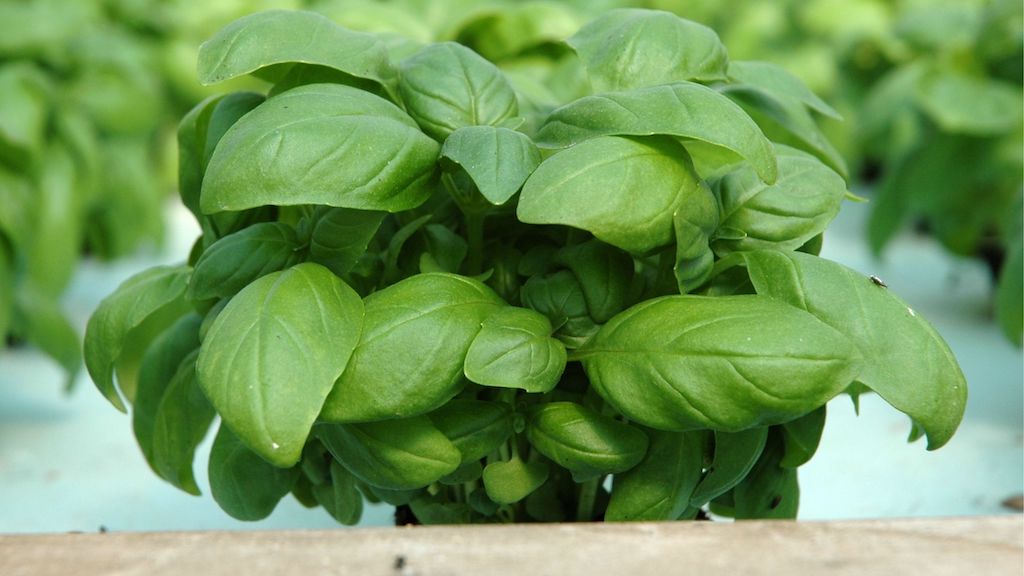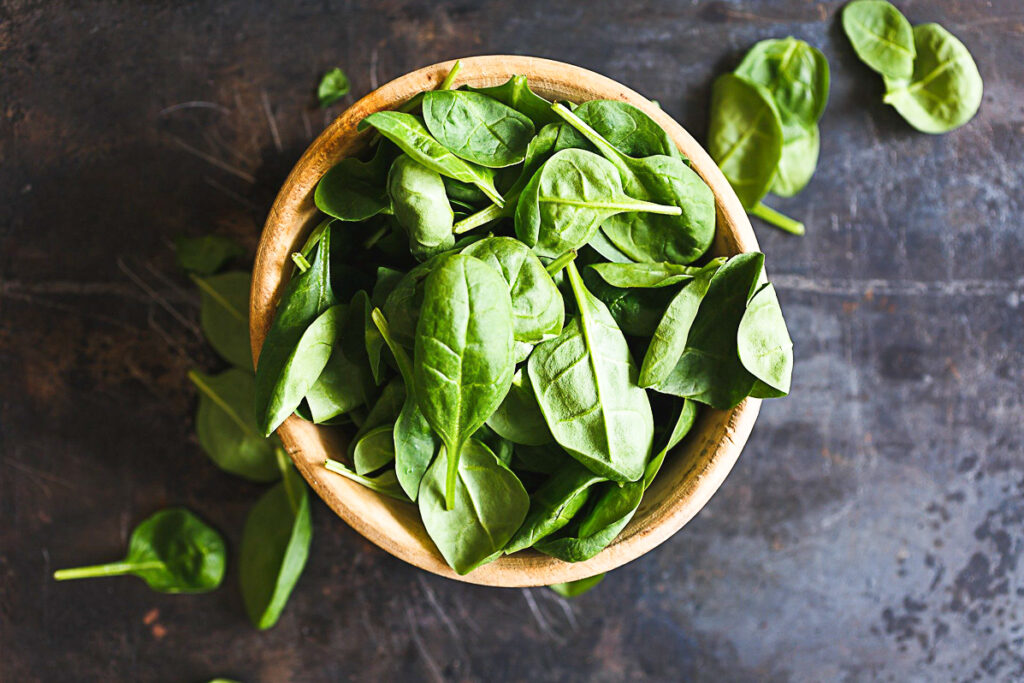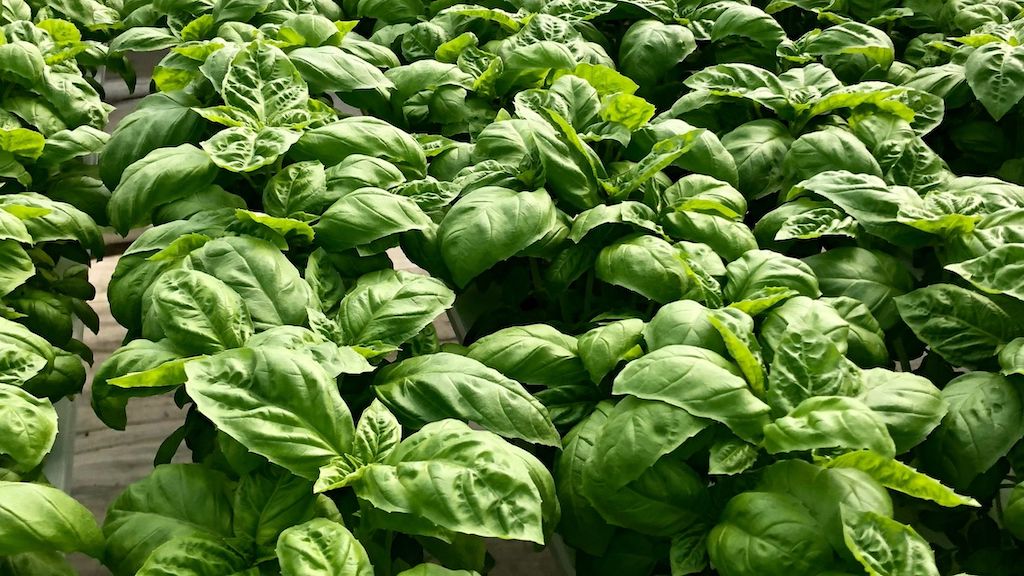Basil is a very popular aromatic herb. It is suitable for many dishes and is particularly great with meat dishes, pasta, and soups. Hydroponic basil is grown in a soil-free system, using water instead of dirt. It’s a great way to grow basil at home, even for beginners.
*This post contains compensated links. Find more info in my DISCLAIMER. As an Amazon Associate, I earn from qualifying purchases.
Want to start a hydroponic garden at home easily? Check out our recommendations for Best Hydroponics Starter Kits for Beginners.
How To Grow Basil Hydroponically At Home
It should come as no surprise that basil is a popular culinary herb. Because of its popularity, producers are looking for ways to increase yields. Basil hydroponics has become one of the best ways to improve its yield in small home spaces.
Basil is one of the best hydroponic plants to grow at home. Hydroponic systems produce plants that have nearly none of the problems associated with soil-grown plants.
Hydroponic basil is popular because this herb is best when used fresh. Fresh basil will hold on to its flavor and aroma. Dried basil loses its taste and aroma.
It is vital to check condensation because basil leaves can hold water. Long periods of high levels of water vapor in the atmosphere can be a problem.
Basil thrives well in warm weather. You should thus maintain the temperature between 70 and 80 degrees Fahrenheit.
Growing basil in a hydroponic system requires pruning and tripping. If the basil stems increase, the plant roots will split and might become bitter.

Growing Hydroponic Basil From Seeds And Saplings
You can either grow basil from seeds or saplings. Basil seeds are tiny and will swell, forming a jelly-like covering when soaked in water. Basil seeds are rich in nutrients, and you can use them in a variety of drinks.
The best temperatures for germinating basil seeds are approximately 75 degrees Fahrenheit. Basil seeds will germinate in five and seven days.
Basil Seedlings are prone to parasites and fungi. You will need to take care when watering in the early stages to ensure that the growing medium is not overly wet.
Once the basil seedlings have expanded, dilute the nutrient solution. However, you can increase the nutrient intensity after transplanting the seedlings.
Basil saplings will form their roots within a week. Best basil saplings are grown indoors to avoid carrying germs and pests.
Space your saplings about five to six inches apart to allow good airflow. Use Neem oil if your hydroponic greenhouse is humid. The oil will protect the basil from fungal problems that spread quickly in the system.
Basil Varieties

There are over 150 varieties of basil. While basil is most associated with cooking, it is also a medicinal herb. The most common types are Sweet basil, Genovese basil, Thai basil, purple basil, lemon basil, lettuce basil, and spicy basil.
All these varieties can be grown hydroponically. The most popular basil for hydroponics is sweet and Genovese basil. These two varieties have large, tasty leaves.
The Best Medium For Hydroponic Basil
Hydroponic plants are grown directly in water mixed with a nutrient solution. The plants will, however, need physical support. Medium provides physical support to hydroponic plants.
The best hydroponic grow medium for basil is Rockwool blocks. However, you can use coco coir, perlite, vermiculite, and peat moss, although they will require sterilization before use. Rockwool propagation blocks are the best for commercial production.
Best Nutrients For Basil Hydroponics
A lot of hydroponic growers use a general nutrient mix. However, you need to know that every plant has a distinct nutrient composition appropriate for its growth.
A mix of calcium and potassium takes up to 50% of the nutrients needed for hydroponic basil. Ensure that your nutrient mix has a ratio of potassium and calcium well maintained. These essential nutrients are directly associated with the flavor and oil of basil.
Nitrogen is also a critical ingredient in yielding leaves. It is, therefore, vital to keep nitrogen constant at all points in time.
Another critical element in hydroponic nutrients is magnesium. Magnesium has a direct link to the composition of basil. It will help yield essential oils that contribute to the flavor and aroma of basil.
It is critical to get the right nutrient mix for your hydroponic basil to keep the basil alive.
Best Light Conditions For Basil Hydroponics
Hydroponic lighting is one of the critical factors for success in hydroponic plants. Hydroponic basil will perform well with high light levels.
Once you transplant basil plants into the hydroponic system, supply high-intensity light. Hydroponic basil requires a minimum of 14 hours of light each day.
When there is no enough sunlight and warmth, you can use an LED grow light. Use LED lights when growing Hydroponic Basil in winter conditions.
The Best Hydroponic Systems For Growing Basil At Home
Deep Water Culture (DWC) and Nutrient Film Technique (NFT) are the best hydroponic basil systems.
In DWC, you transplant seedlings into rafts. The rafts float in ponds containing water mixed with a nutrient solution. A water pump circulates water through the system. An air pump provides oxygen to the pond keeping it aerated.
In NFT, you transplant basil seedlings into channels with a thin film of the nutrient mix. Slope the channels to drain the water back to the water reservoir.
Our 5 Top Tips For Growing Hydroponic Basil

Tip 1: Care For The Plant
Most field crops require little care. However, hydroponic basil plants require daily care and management. Tailoring the environmental factors to meet the specific needs of basil will lead to high yields.
Tip 2: Provide The Ideal Environmental Factors
Temperature and light are critical when growing hydroponic basil. The ideal temperature for hydroponic basil will range from 65 to 75 degrees Fahrenheit. Perfect light conditions should be above 14 hours of light daily.
A hydroponic grow tent is the ideal place to grow hydroponic basil. The tent will allow you to adjust temperature and light requirements.
Tip 3: Using A Specific Nutrient Mix For Hydroponic Basil
Using a particular nutrient mix for leafy greens and herbs is highly recommended. It would be best if you also grew hydroponic basil in isolation. Isolation will allow you to optimize the nutrient solution, temperature, and light.
Tip 4: Regular Pruning
Basil plants grow heavily and will require regular pruning. If you do not prune the plant, the roots will split, and the plant will become bitter.
The plant has to transport water and nutrients to all its stems and leaves. Pruning makes this easy for the plant.
Tip 5: Proper Watering
Water your hydroponic basil every day for five to seven days to allow it to adjust to a wet environment. After five to seven days, start weaning them off the heavy watering and eventually get to regular watering.
In summary, Hydroponic basil is easy to grow, especially in areas with limited space. You will, however, need to take great care of the plant, unlike other plants. A hydroponic grow tent will assist you in getting the ideal conditions to grow hydroponic basil.
FAQs – Hydroponic Basil
Basil grows well nearly everywhere, including hydroponically. Growing in less than a month, basil is perfectly suited to hydroponic growing. It doesn’t take up much room. It has shallow roots. And doesn’t require much TLC.
Like any plant, basil needs three things to keep alive, even when grown hydroponically. Water, sun, and nutrients are the most important aspects of growing basil. Monitoring these three one a regular basis will ensure a healthy basil crop.
Transplanting a healthy hydroponically grown basil plant to the soil is possible but required extra attention. Transplanting any plant from one environment to another is always tricky. It’s important once the transplanting is done to monitor water and nutrient levels.
